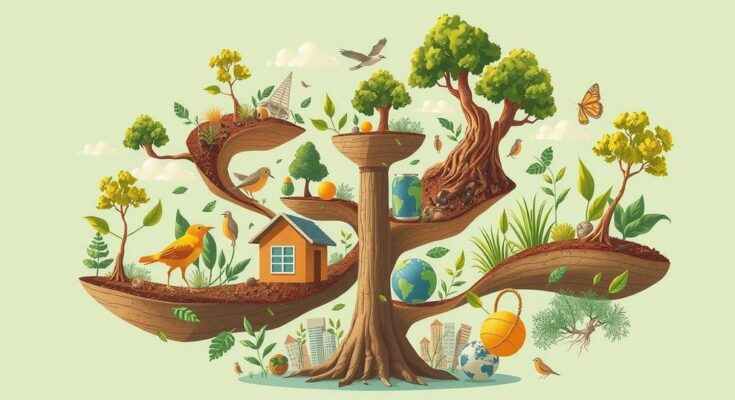Since the introduction of the UN’s Sustainable Development Goals (SDGs) in 2015, significant investments in sustainability have been made. Yet, despite numerous initiatives and forums, the progress achieved is overshadowed by economic inequality, with two-thirds of global wealth concentrated among the top 1% since 2020, while a large portion of the population survives on less than $10 per day. This reflects a wealth-generating economy that fails to distribute resources equitably, exacerbating the depletion of our ecosystems.
To meet the challenges of the 21st century, we must cultivate a sustainable model that harmonises economic growth with social equity and environmental protection. Enter “Sustainomy”—a new paradigm where wealth generation aligns with ethical practices, ensuring growth fosters innovation without deepening inequality. This vision invites us to reconceptualise the relationship between economy and sustainability, making them two sides of the same coin.
The current economic architecture regards prosperity, people, and the planet as separate entities. In the name of efficiency, automation has led to job displacement, sidelining the workforce that fuels the economy. AI, described by Avi Goldfarb as a “prediction machine,” lacks contextual understanding and ethical judgement. To avoid undermining the pillars of innovation, we must enhance AI’s role within a framework that values human intelligence, turning the synergy between humans and machines into a powerful tool for economic resilience.
Effective implementation of “Sustainomy” also hinges on governments prioritising broad-based development. This involves building stronger foundations through enhanced purchasing power, greater job security, and substantial investment in education. Structural reforms that focus on long-term stability are essential; meanwhile, private sectors should hone skills that complement AI, such as creativity and emotional intelligence. As individuals gain better access to education and prospects, improved sustainability practices will follow, reinforcing a symbiotic relationship between the economy and the environment.
In an ever-changing global economy, “Sustainomy” reshapes industry structures to ensure resilience. By maintaining balance across various sectors—those essential for infrastructure, emerging volatile industries like renewable energy, and phasing out declining sectors—the approach supports stability while fostering innovation. This method mitigates economic shock and carves out pathways toward sustainable energy solutions.
The power of the middle class, particularly in developing nations, remains largely untapped. Comprising 45% of the global populace and contributing significantly to consumer spending, they represent a vital economic engine. Addressing their challenges requires acknowledging the intertwined nature of all economic levels and investing in education and financial inclusivity. Enhancing opportunities for small and medium-sized enterprises (SMEs) bolsters economic prospects, allowing sizeable growth that uplifts all sectors rather than merely redistributing wealth.
Transitioning to “Sustainomy” necessitates a cohesive and integrative strategy, focusing not just on an economic shift, but also on evolving market structures and organisational practices. By nurturing connections between stakeholders and transforming brands into resilient and responsive entities, we pave the way toward an economy that values humanity as much as profit. Ultimately, genuine success lies in how effectively we create and sustain wealth while caring for our planet and communities, ensuring a thriving life for all.
The article discusses the need for rethinking economic models towards sustainability. It argues that the current system, which concentrates wealth and neglects environmental concerns, must evolve into ‘Sustainomy’, where economic growth aligns with ethical practices. Key components include integrating human intelligence with AI, investing in education and sustainable industries, and unlocking the potential of the middle class in developing countries, fostering an economy that values social equity as much as profit.
The vision of a sustainable economic model, termed ‘Sustainomy’, offers a path to harmonise economic growth, social equity, and environmental stewardship. Essential to this vision is the idea of enhancing human intelligence in economic decision-making and fostering symbiotic relationships between technology and humanity. By investing in human capital, policymakers and corporate leaders can unlock the full potential of the middle class, ensuring broader access to opportunities and equitable distribution of resources. This thoughtful transition toward a balanced, interconnected economy is vital for long-term resilience, benefiting not just individuals but the health of the planet as well.
Original Source: time.com



